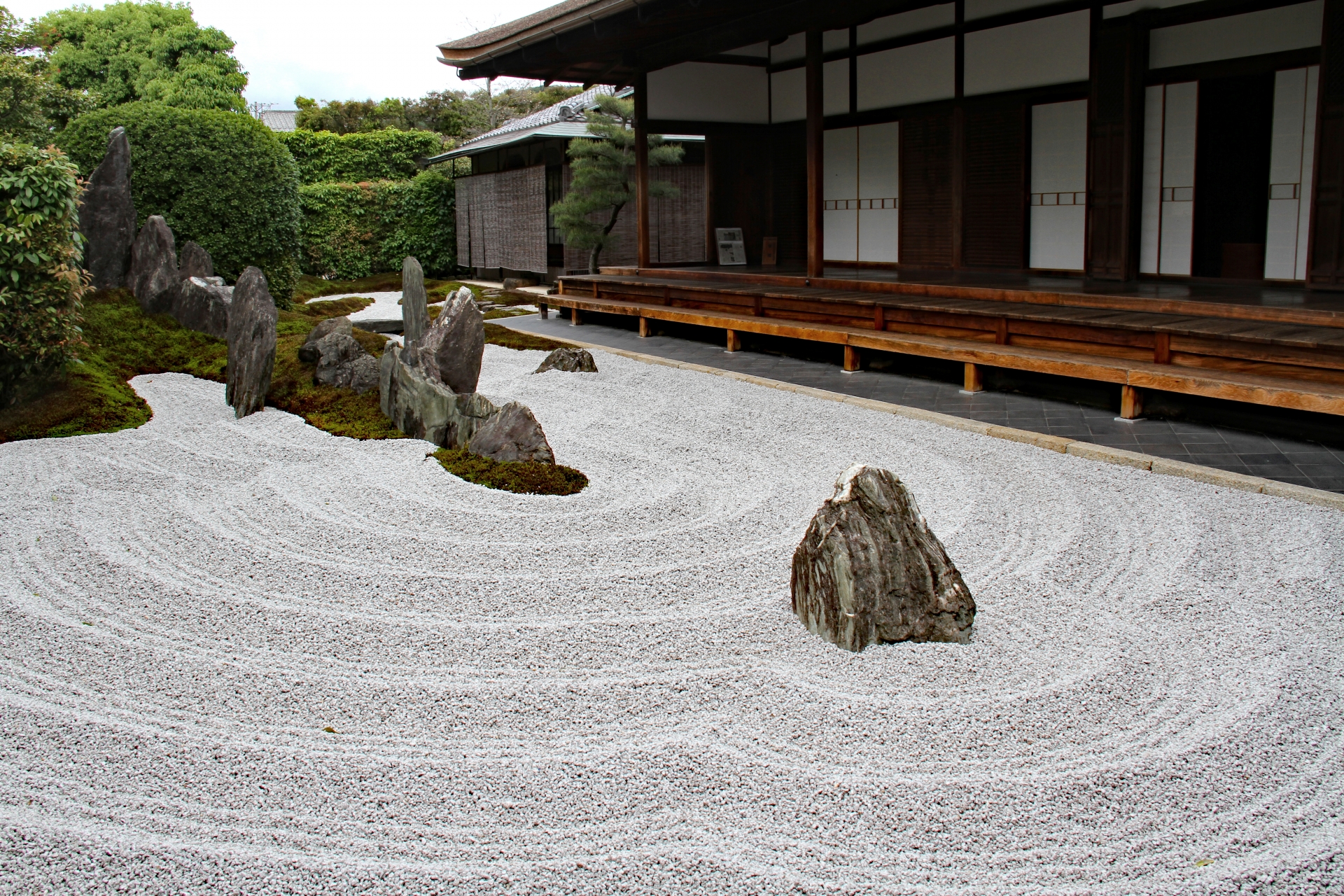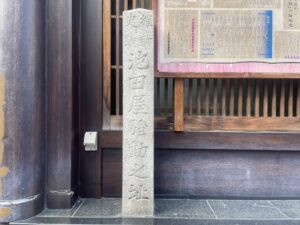Karesansui gardens, often referred to as Zen gardens, represent the harmonious balance between nature and mindfulness. Characterized by their minimalist use of rocks, sand, and gravel, these gardens invite reflection and peace. This article will guide you through their design principles, historical background, and spiritual significance, while also offering tips for creating your own Karesansui space.
The Origins of Karesansui Gardens
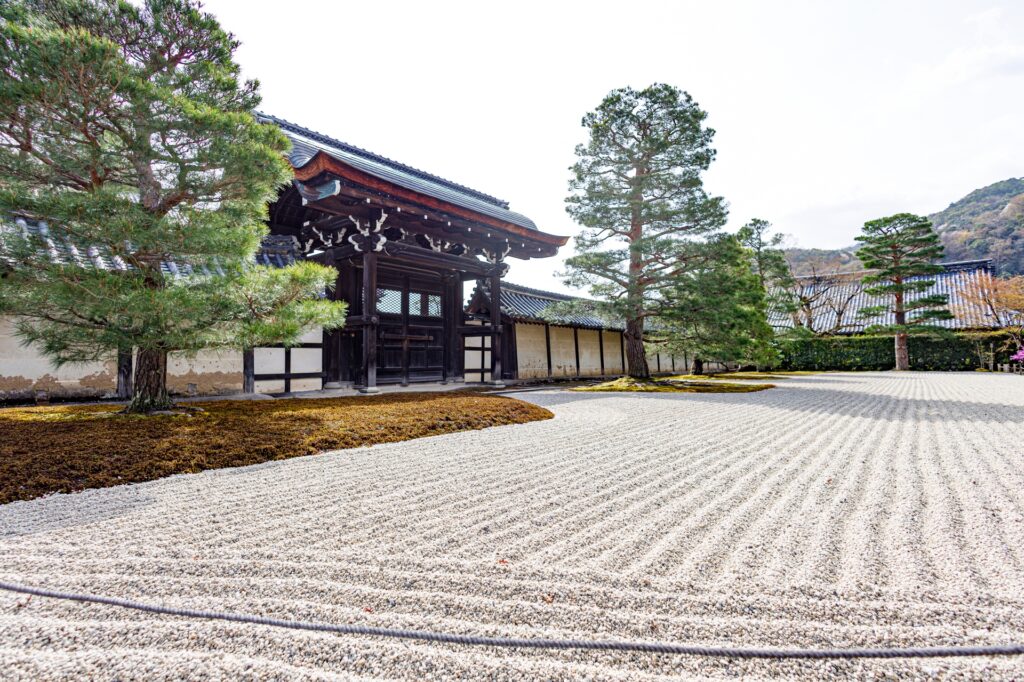
Karesansui gardens, originating during the Muromachi period (1336-1573), have deep roots in Zen Buddhism and samurai culture. They evolved as spaces for meditation, offering simplicity and serenity in design to reflect the teachings of Zen. Early examples like Ryōan-ji and Tenryū-ji in Kyoto epitomize this aesthetic, using minimal elements to symbolize natural landscapes. These gardens were designed not just for visual beauty but for introspection, often serving as an extension of Zen temples.
Key Elements of Karesansui Design
Karesansui gardens rely on symbolic representations of nature rather than lush greenery. Key materials include rocks, gravel, and sometimes moss. These elements combine to evoke mountains, rivers, and islands, creating a spiritual microcosm that reflects the natural world. The arrangement of these elements is not random but carefully planned to invoke peace and contemplation.
Rocks: The Building Blocks of Karesansui
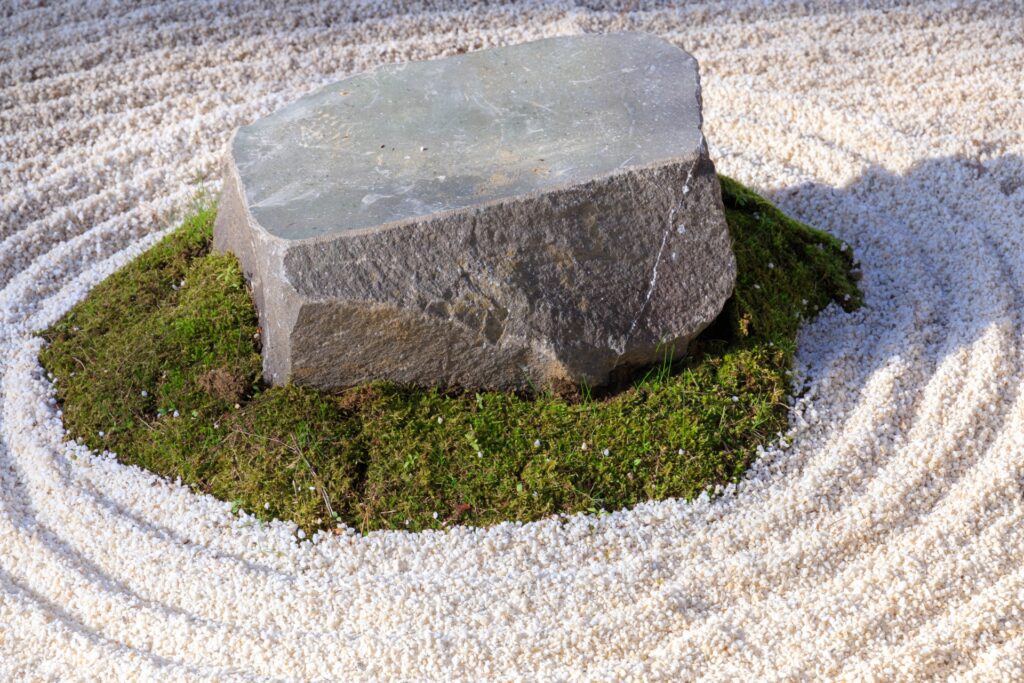
In Karesansui gardens, rocks are foundational, representing various natural forms like mountains, animals, or islands. The placement of rocks follows Zen principles, embodying the concepts of stillness and permanence amidst the flow of time. For example, larger vertical rocks often symbolize towering mountains, while smaller, smoother stones may represent islands floating in a sea of sand.
The Role of Sand and Gravel in Zen Gardens
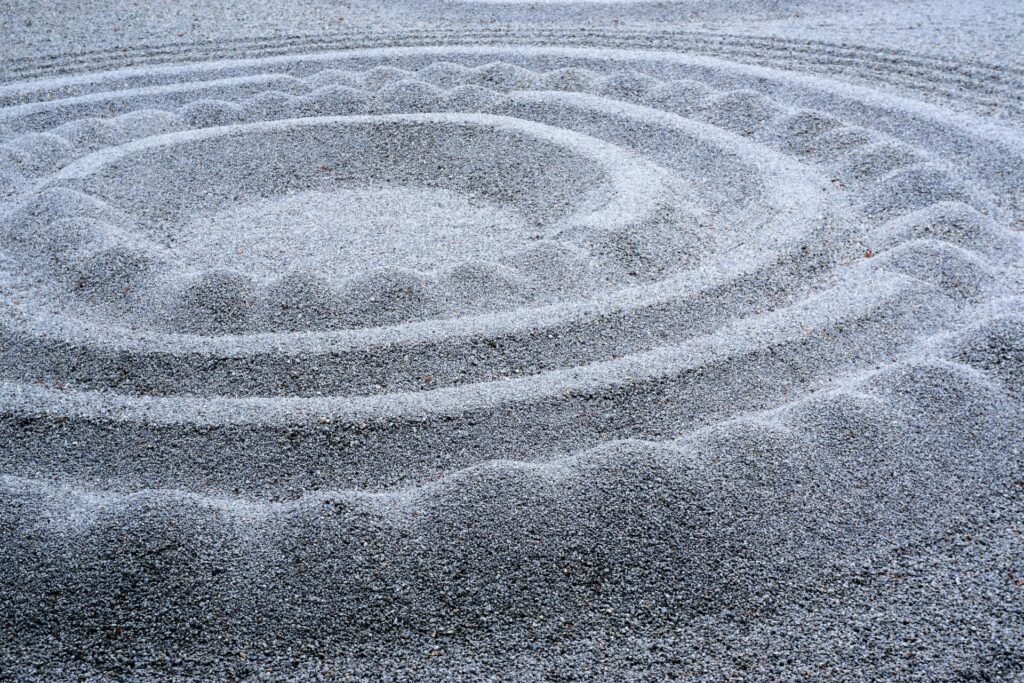
Sand and gravel in Karesansui gardens are symbolic of water. By raking the gravel into patterns, gardeners recreate the appearance of flowing rivers or rippling ocean waves. The act of raking itself is meditative, encouraging the gardener to focus on each movement and become one with the garden. This practice reflects Zen principles of mindfulness and the transient nature of existence.
Famous Karesansui Gardens in Japan
Japan is home to some of the most iconic Karesansui gardens, each offering a unique glimpse into Zen philosophy through landscape design.
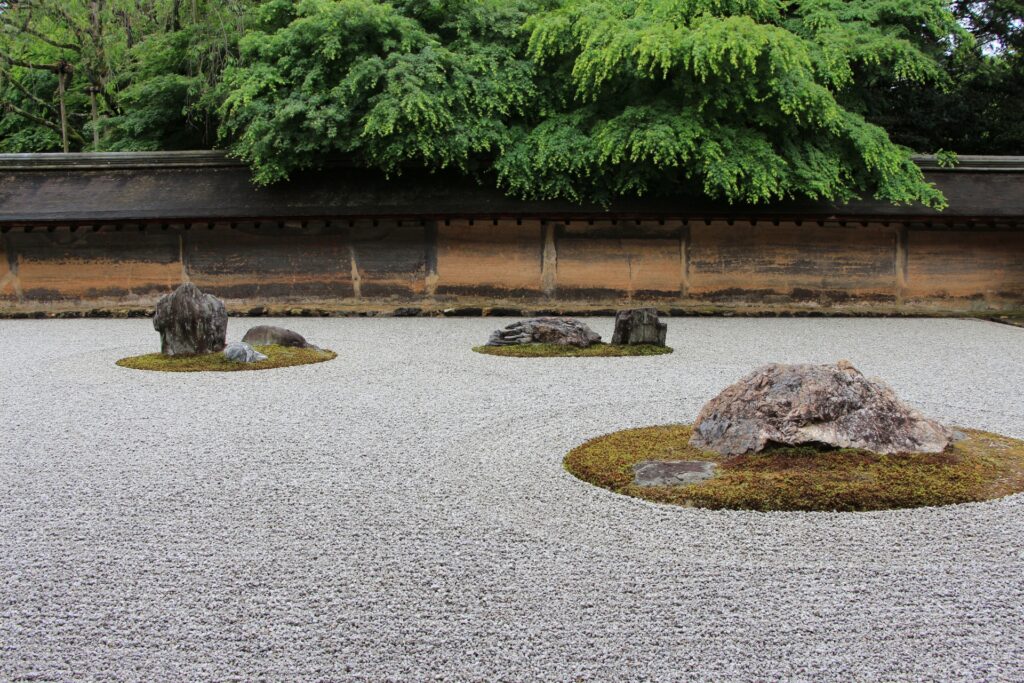
- Ryōan-ji: Perhaps the most famous Zen garden, located in Kyoto, features 15 carefully placed stones on a bed of white gravel. Its layout invites endless contemplation, as visitors can never view all the stones at once, symbolizing the incomplete nature of human perception.
- Saiho-ji (Kokedera): Known as the Moss Temple, this garden combines moss and rocks in a lush yet minimalist setting, embodying both simplicity and natural beauty.
- Daisen-in: Located within Daitoku-ji Temple, this garden is famous for its intricate rock arrangements, representing mountains, rivers, and forests within a confined space.
Visiting Karesansui Gardens
When visiting Karesansui gardens, approach them with an open mind and a contemplative spirit. These gardens are not meant for hurried tours but for slow, mindful observation. Spend time viewing the arrangement of rocks and gravel from different angles, letting the simplicity of the design encourage reflection.
Creating Your Own Karesansui Garden
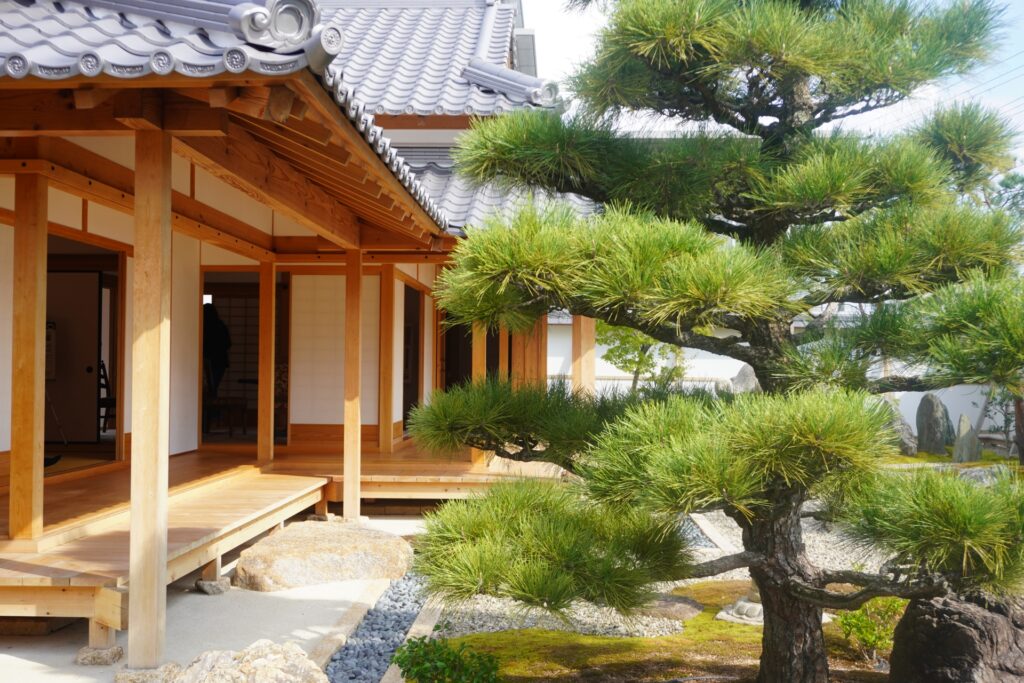
Bringing the tranquility of a Karesansui garden to your home is possible, even in a small space. Here’s how you can create your own Zen garden:
- Select Rocks: Choose rocks that reflect your intended symbolism—tall, jagged stones for mountains or smooth, rounded stones for islands.
- Prepare the Base: Lay a foundation of sand or gravel. Use light-colored materials to reflect the Zen aesthetic.
- Raking Patterns: Rake the gravel into flowing lines or rippling circles, representing rivers or waves.
- Minimal Vegetation: Incorporate moss or a single shrub for a touch of greenery, while keeping the overall design minimalistic.
Maintaining a Karesansui garden requires regular raking to preserve the patterns in the gravel. This simple task is an opportunity for mindfulness, turning garden maintenance into a meditative practice.

